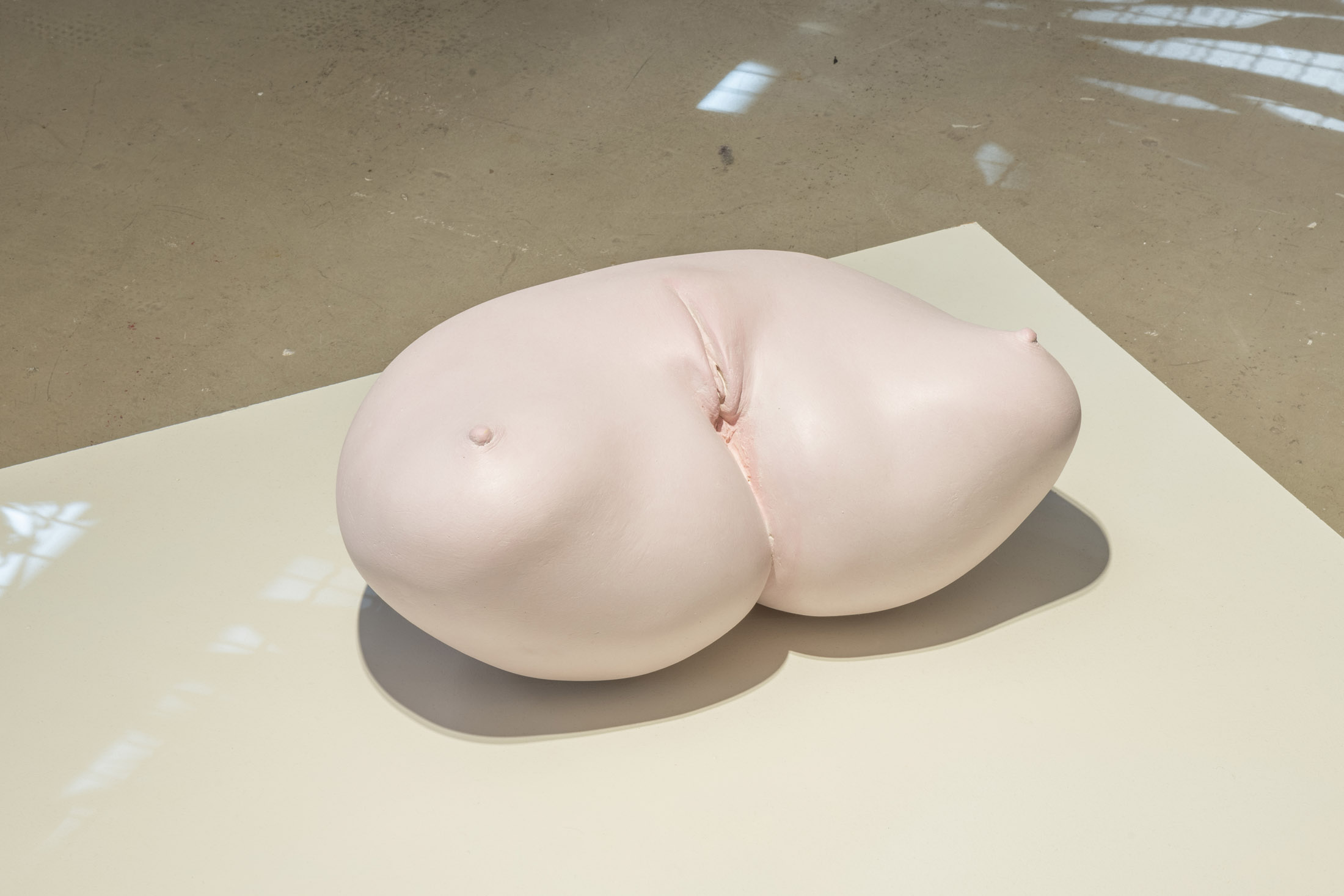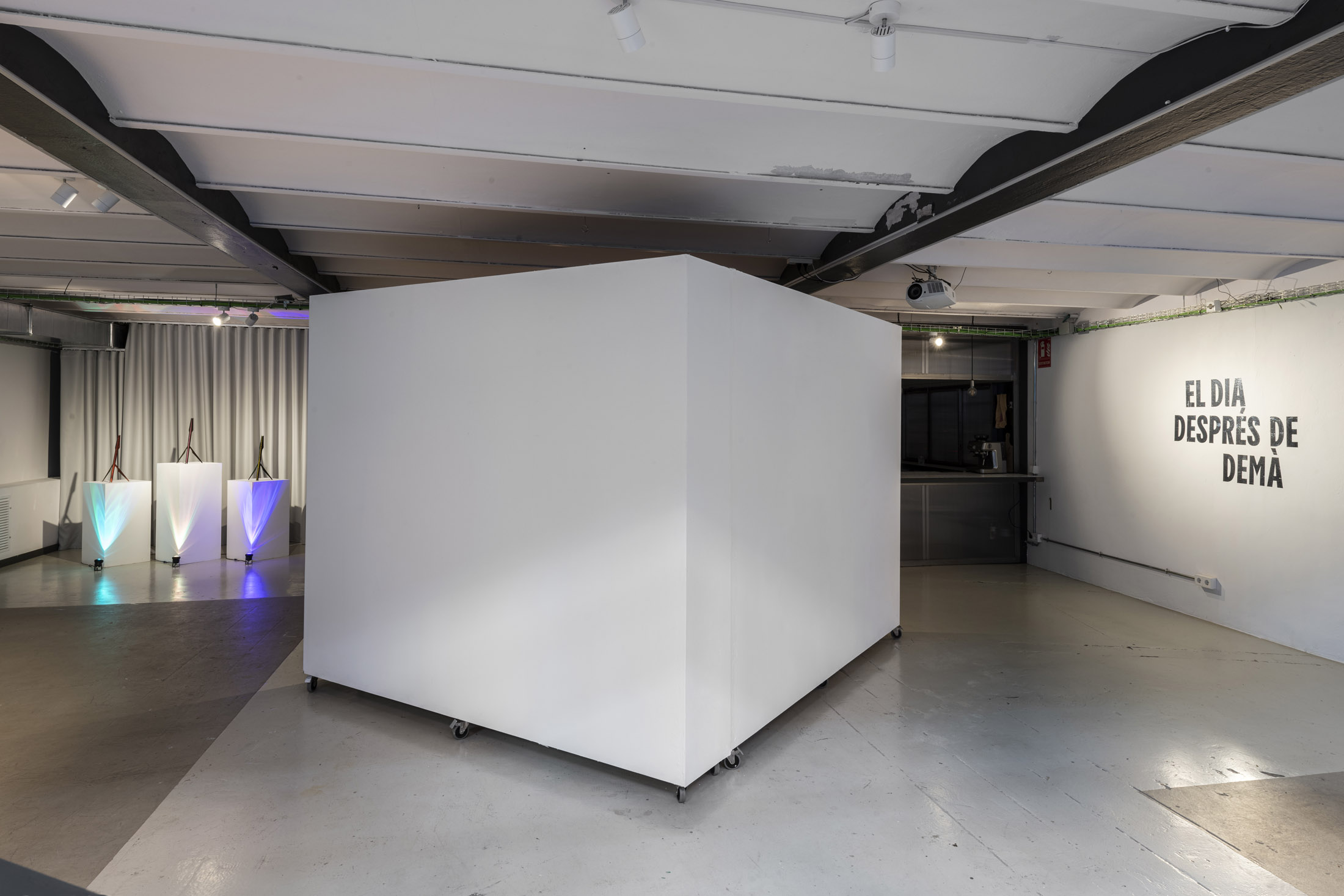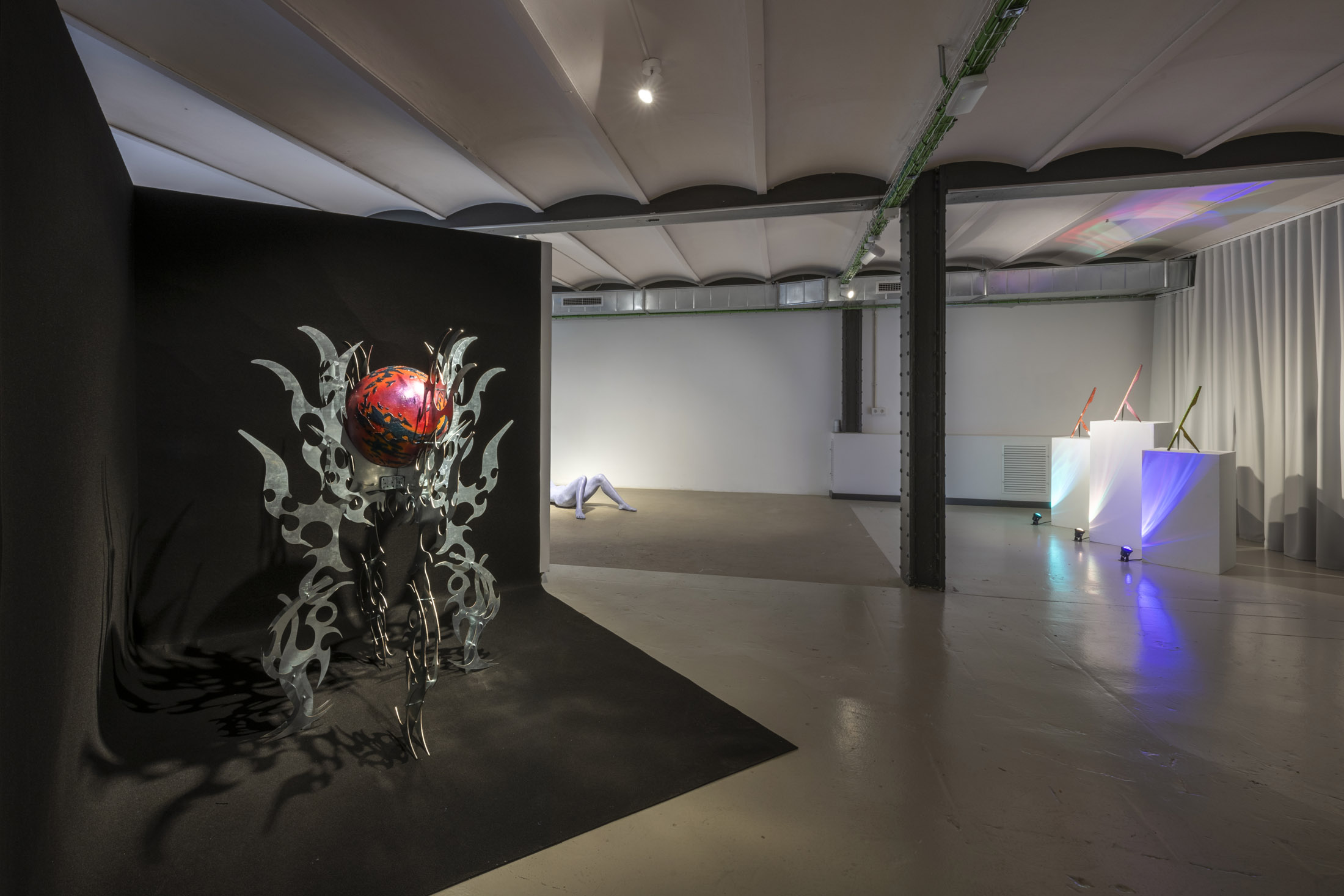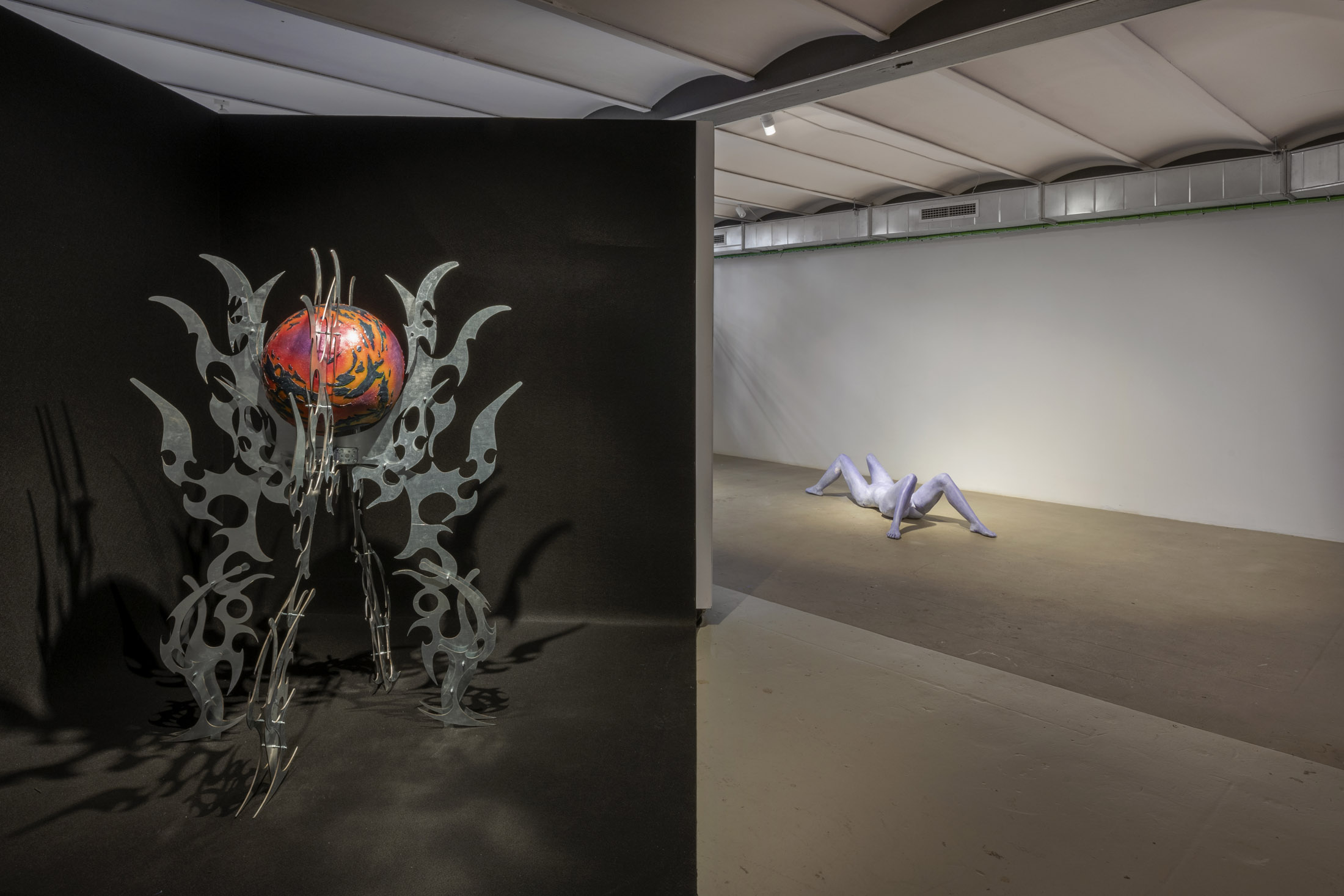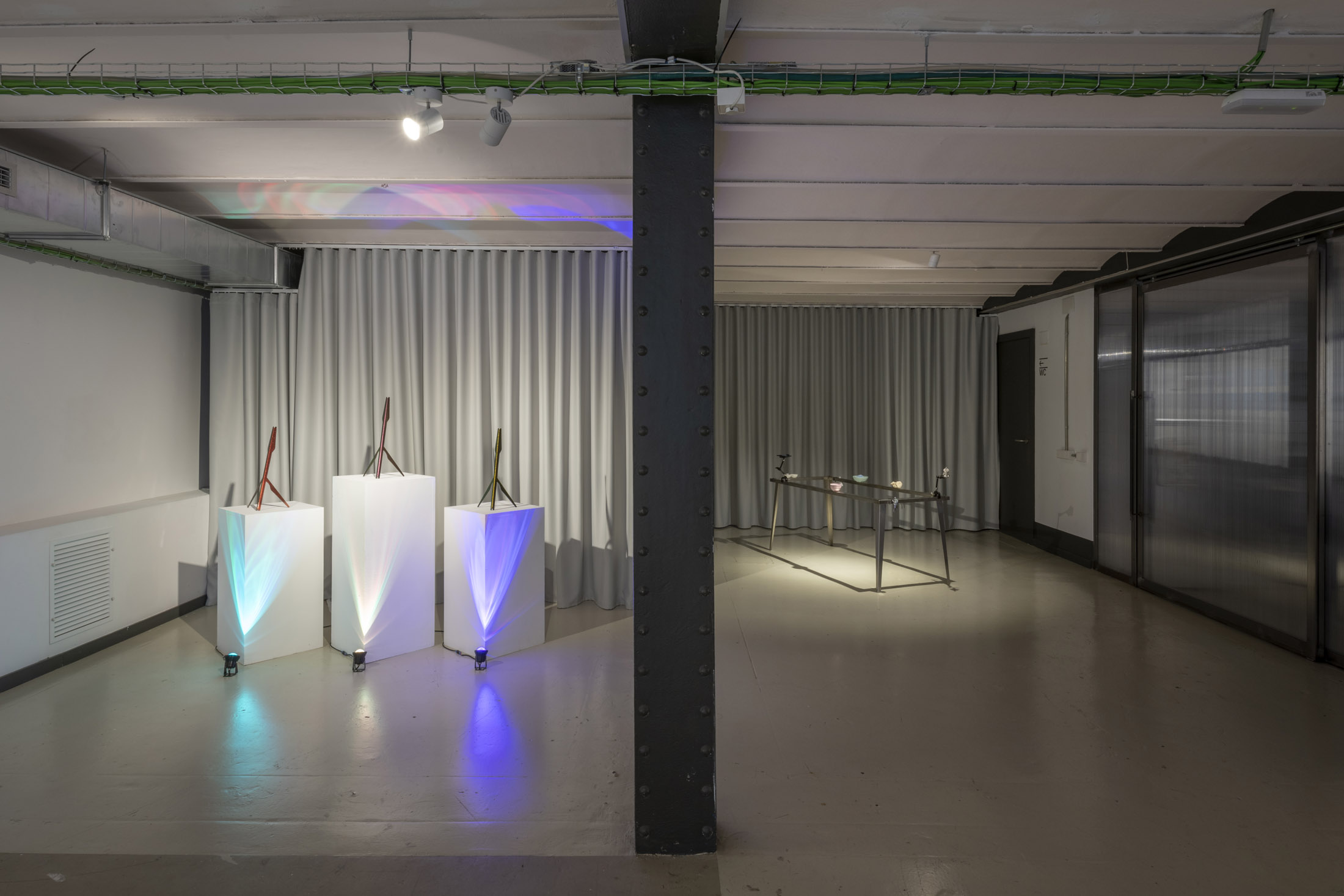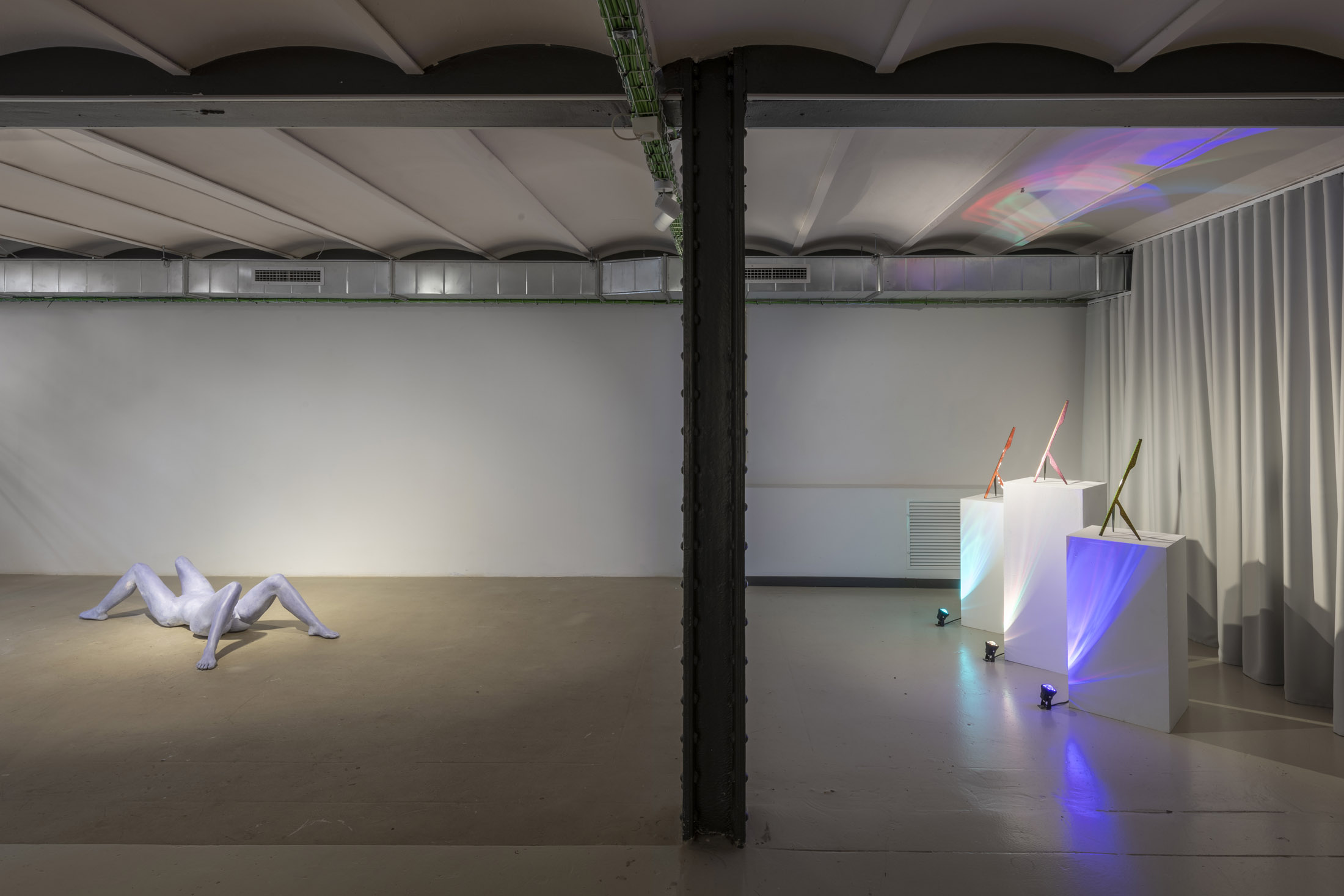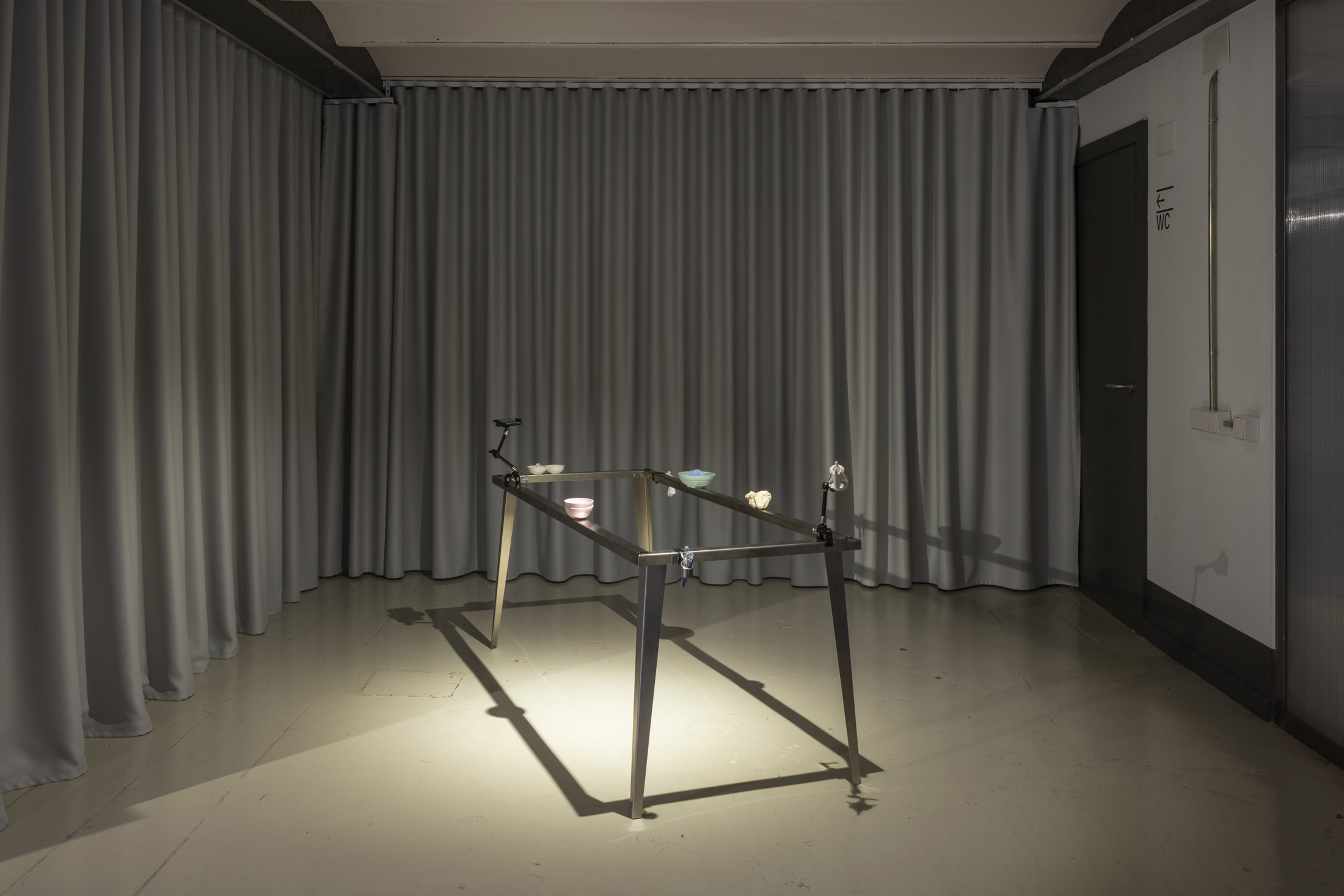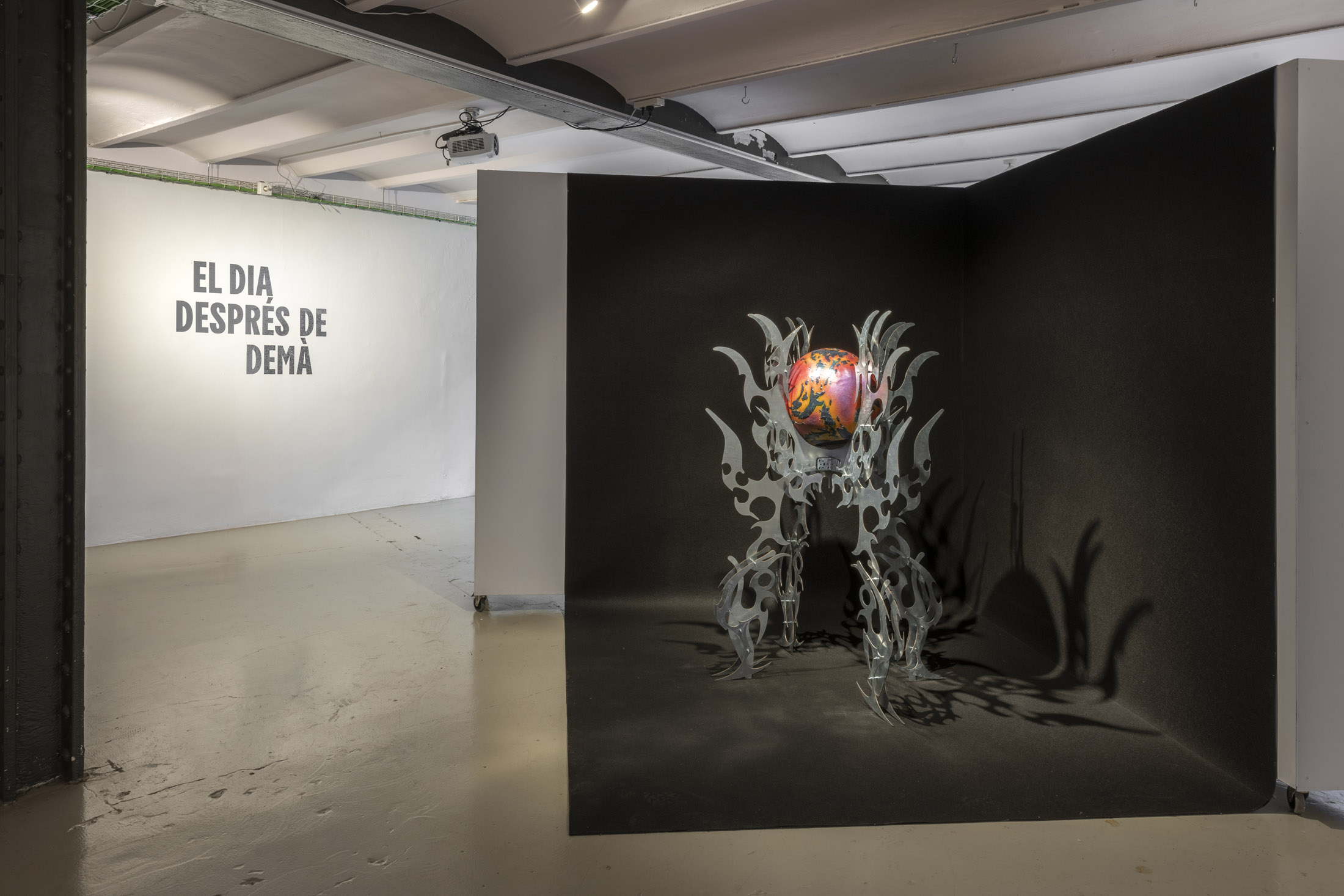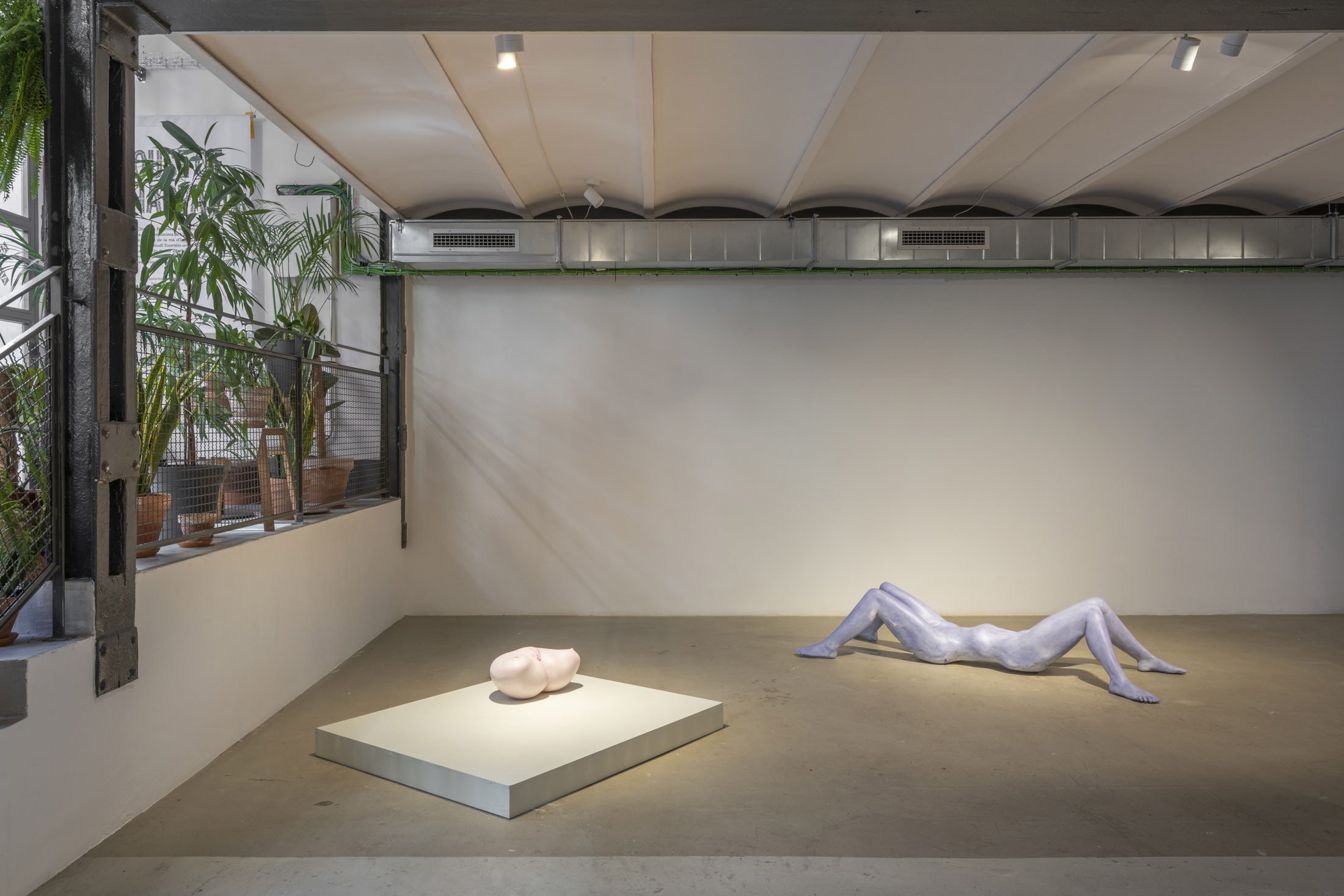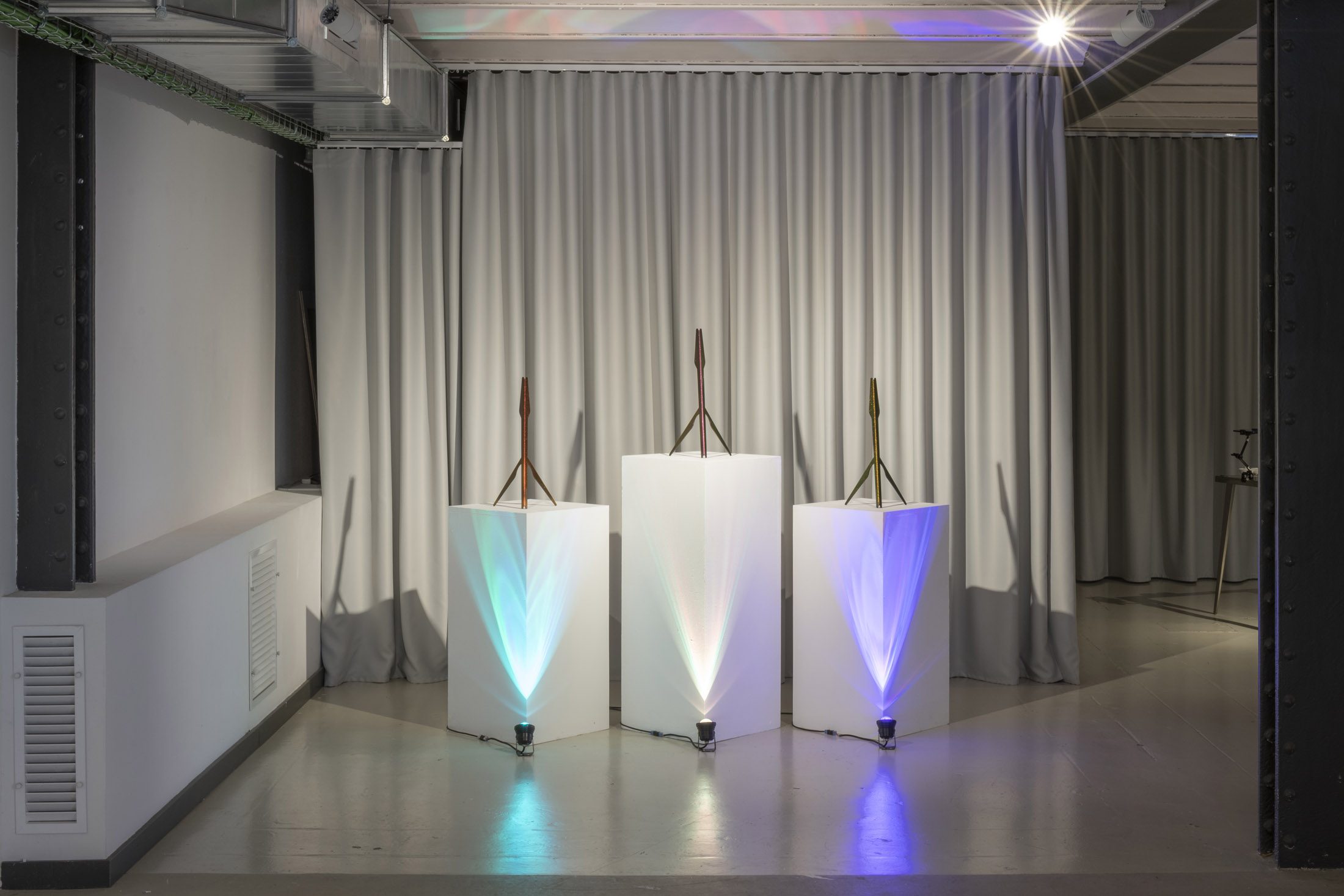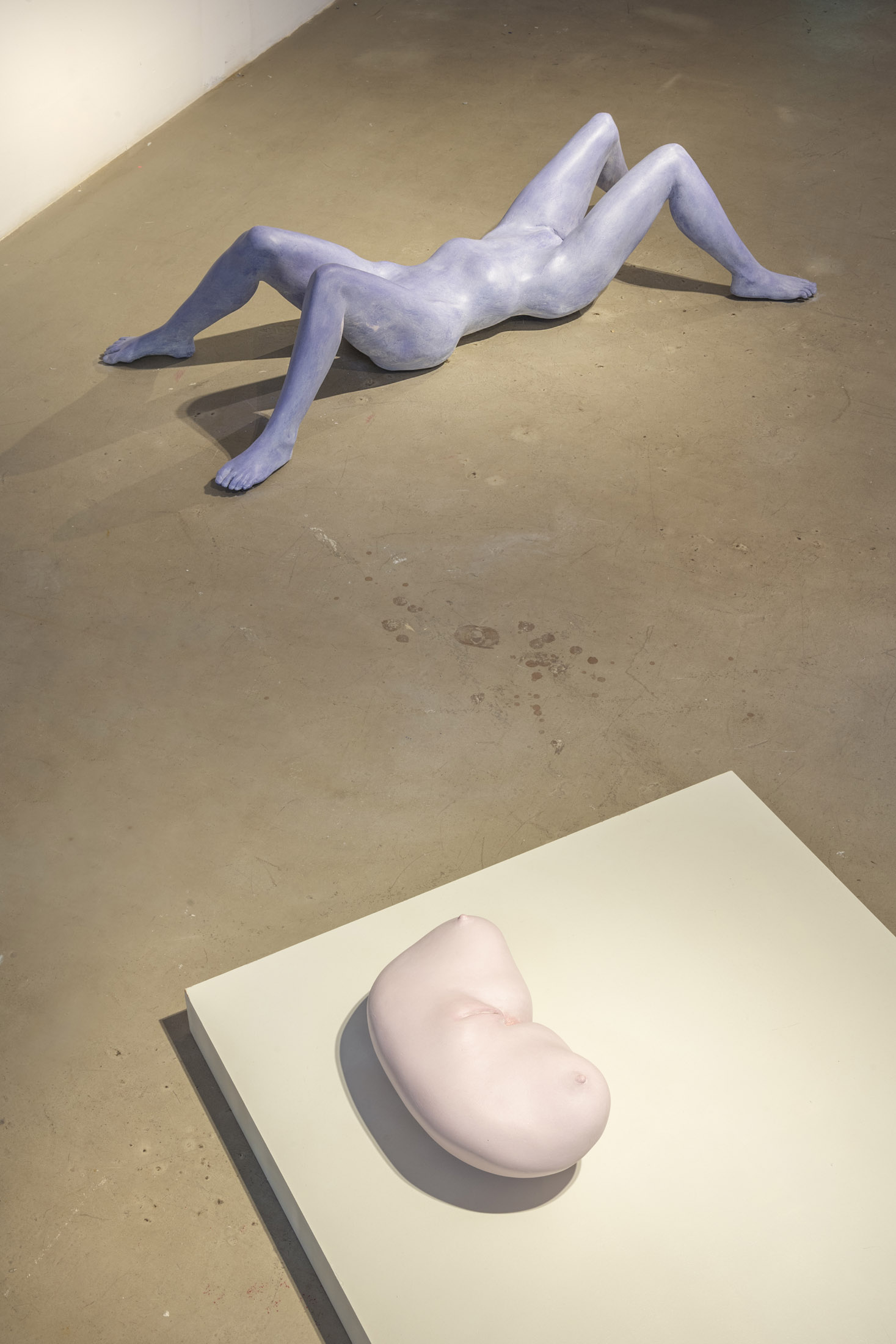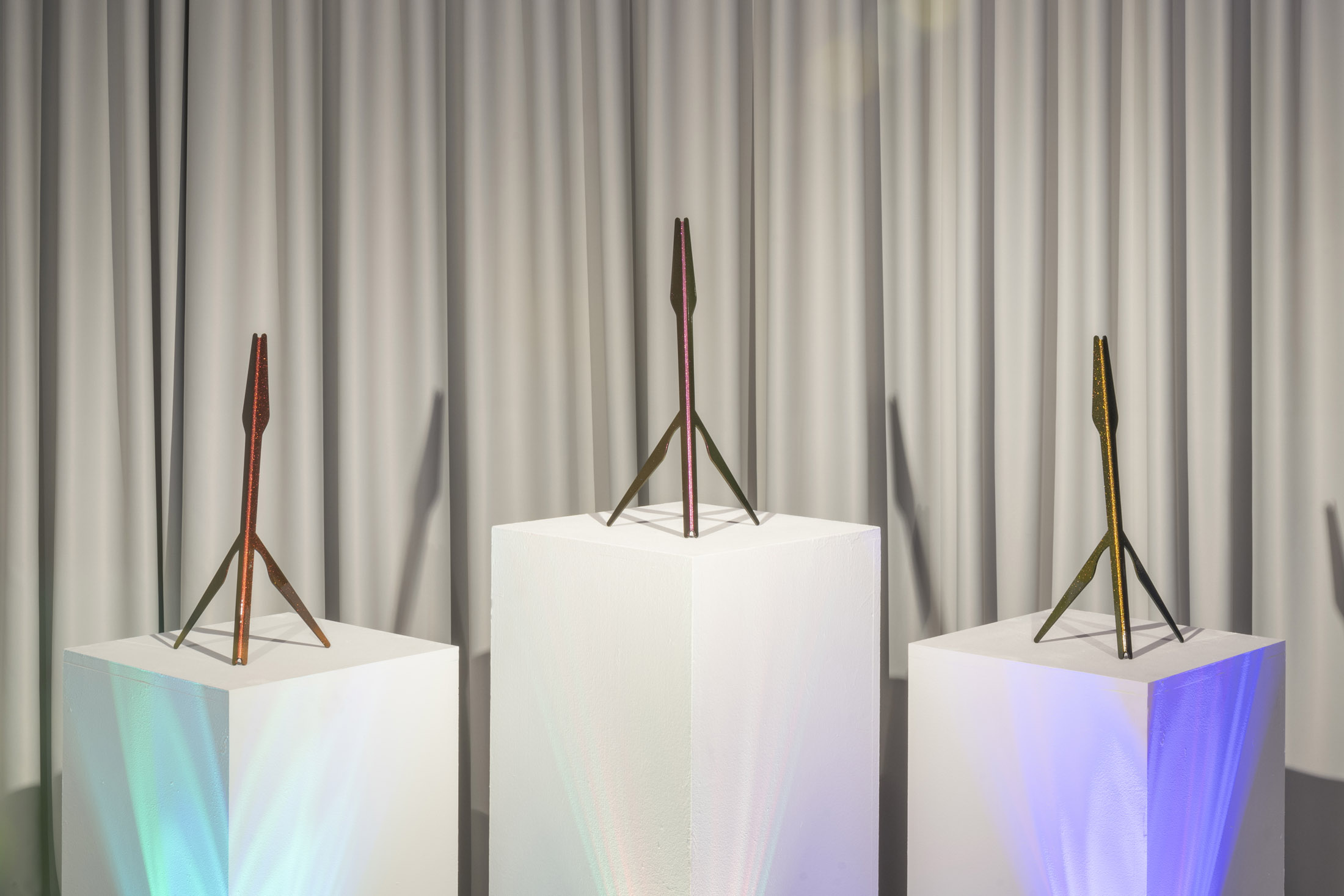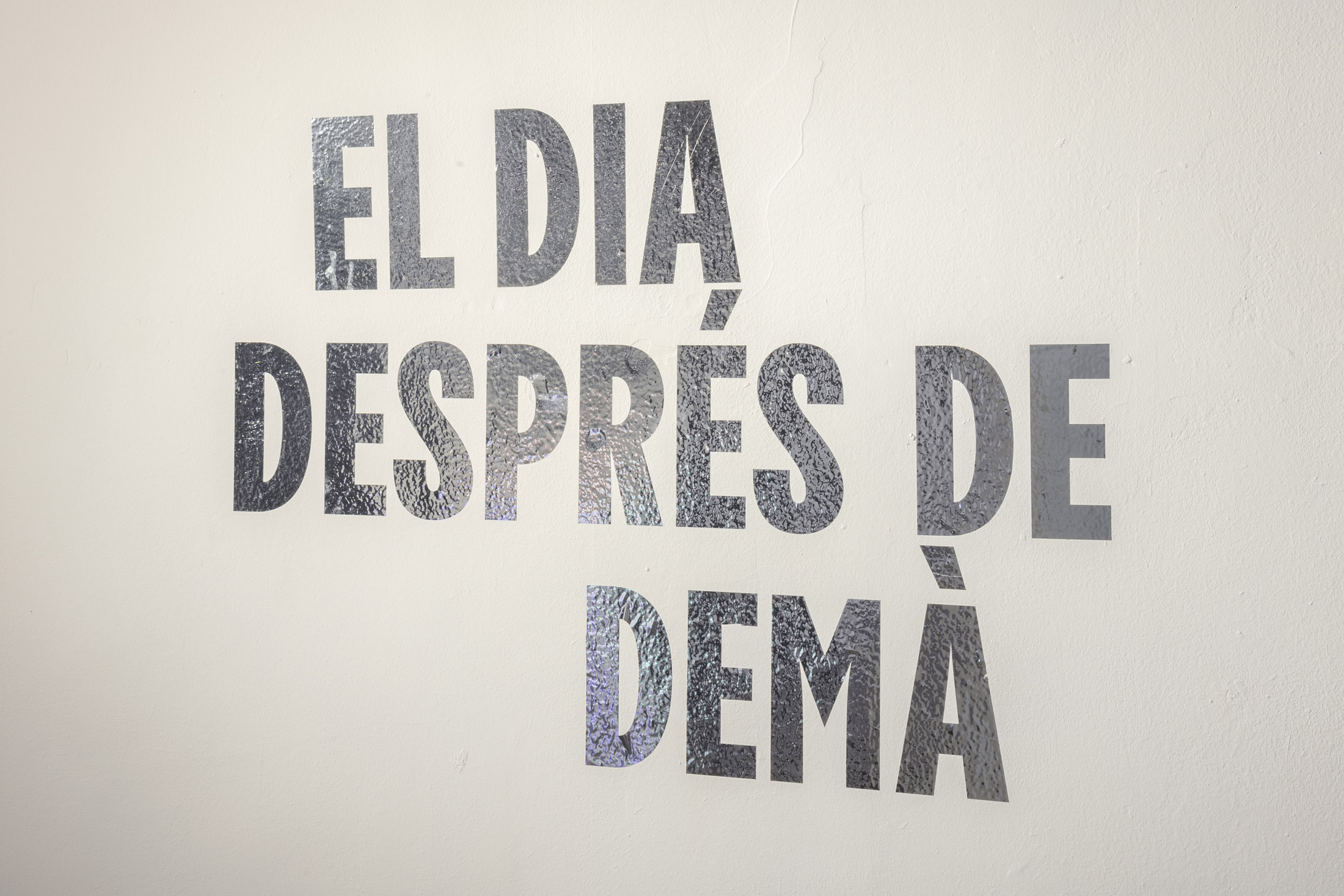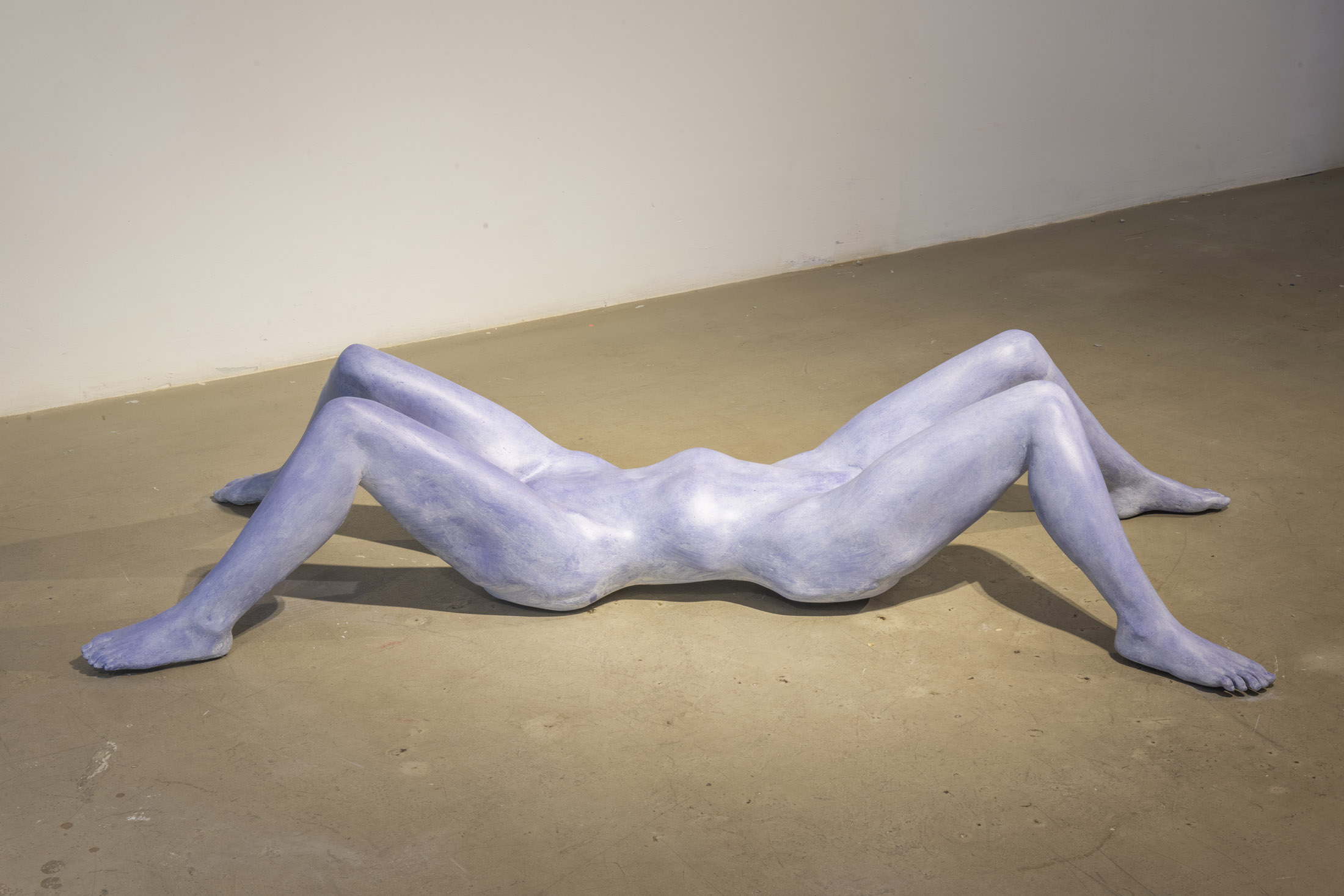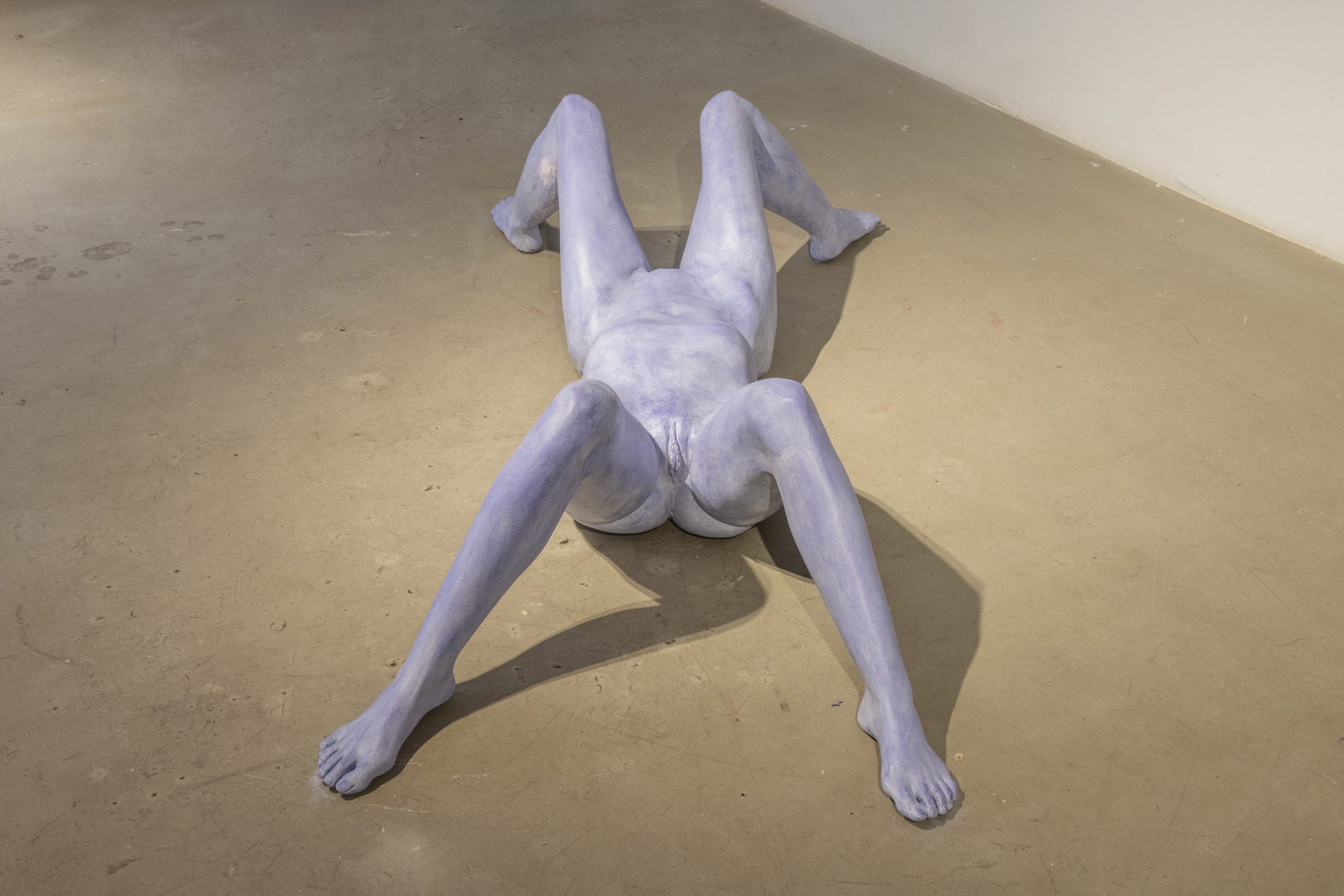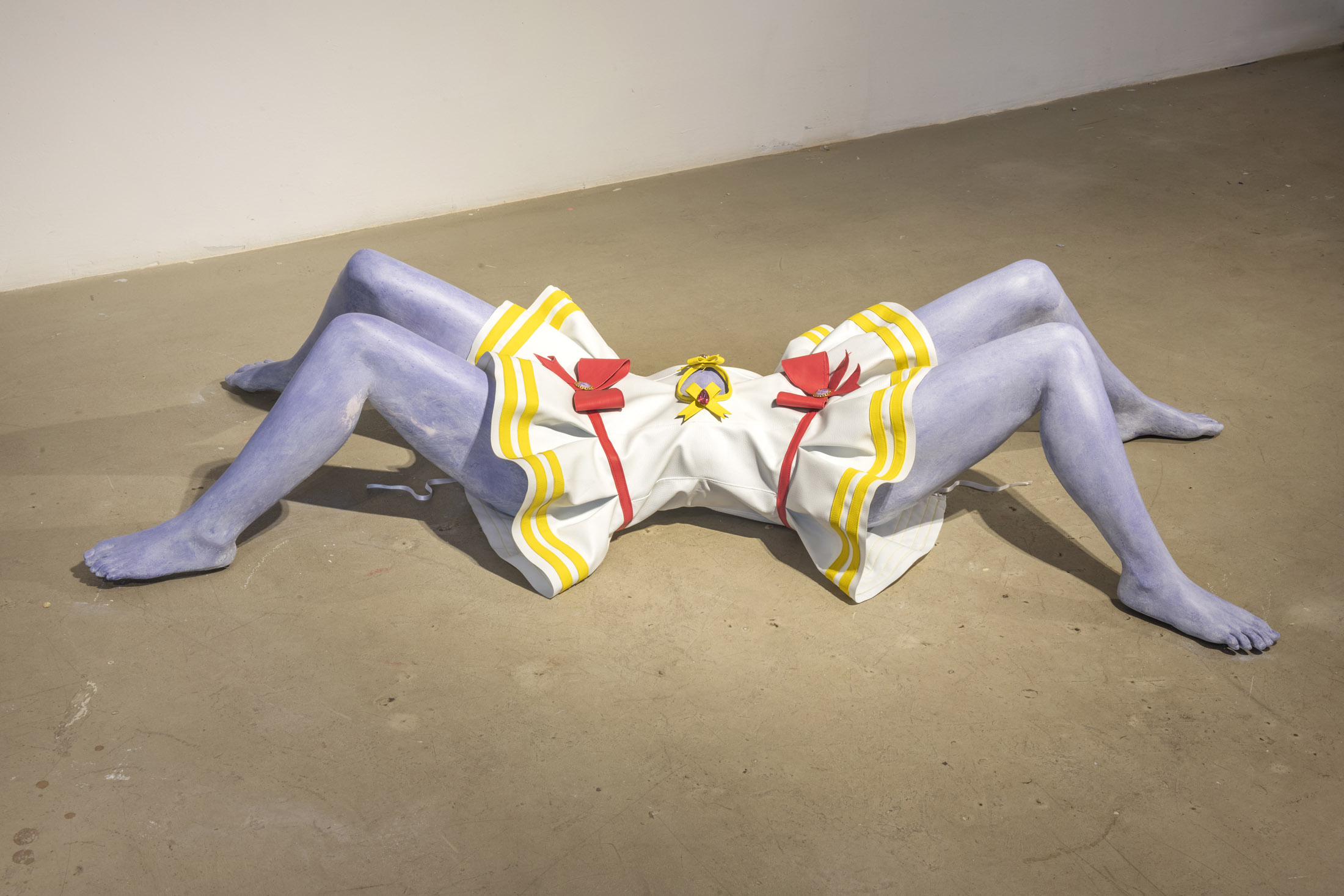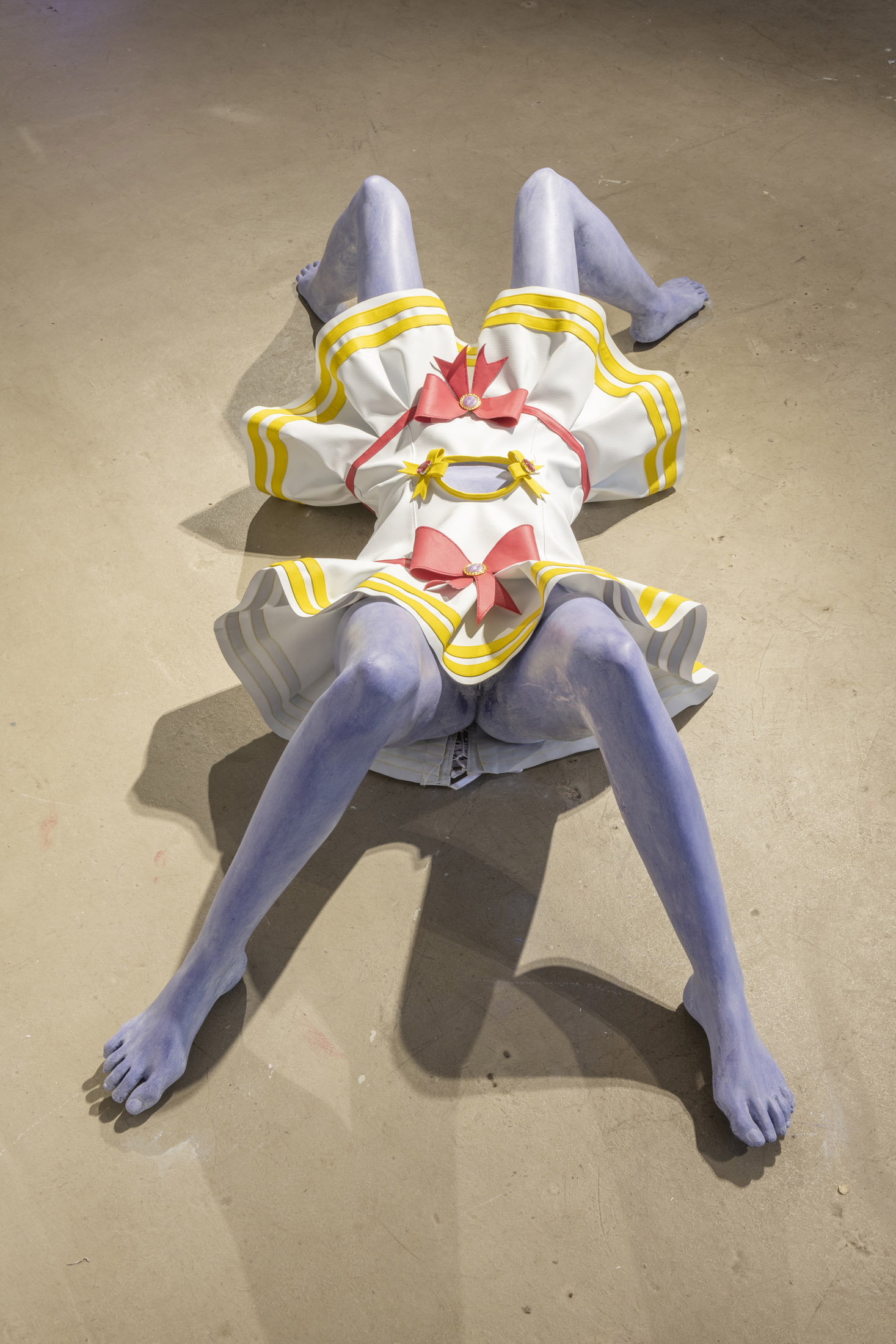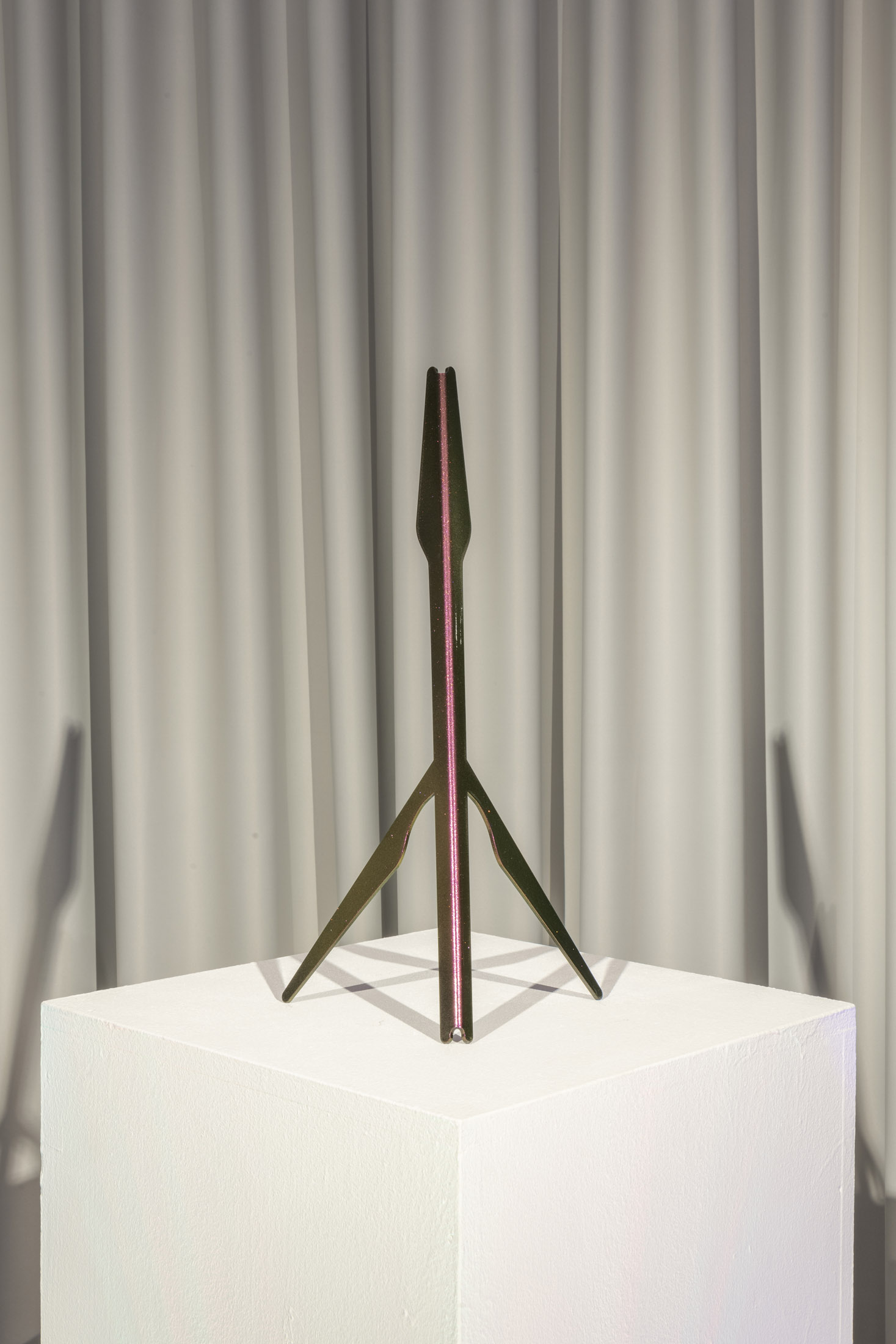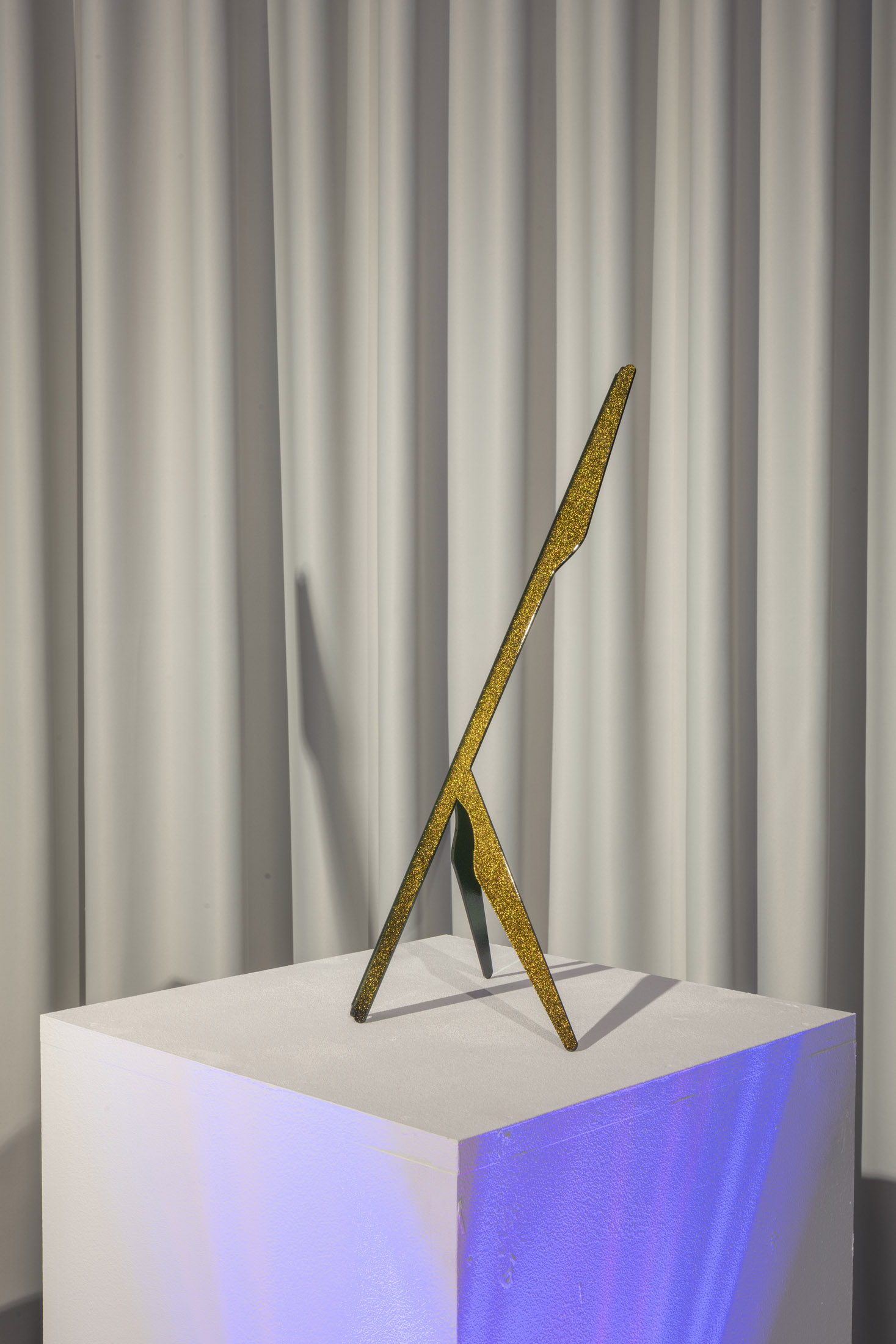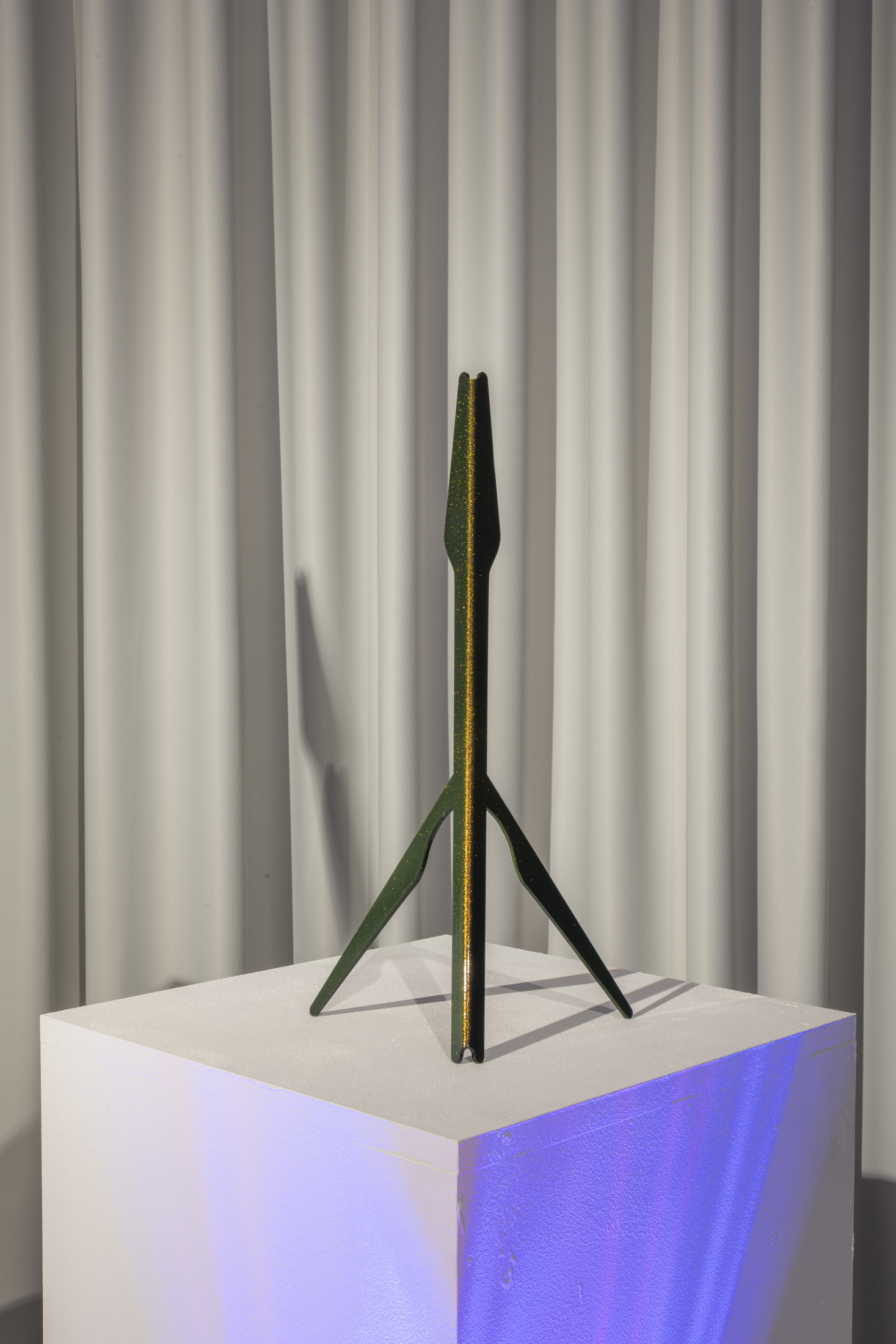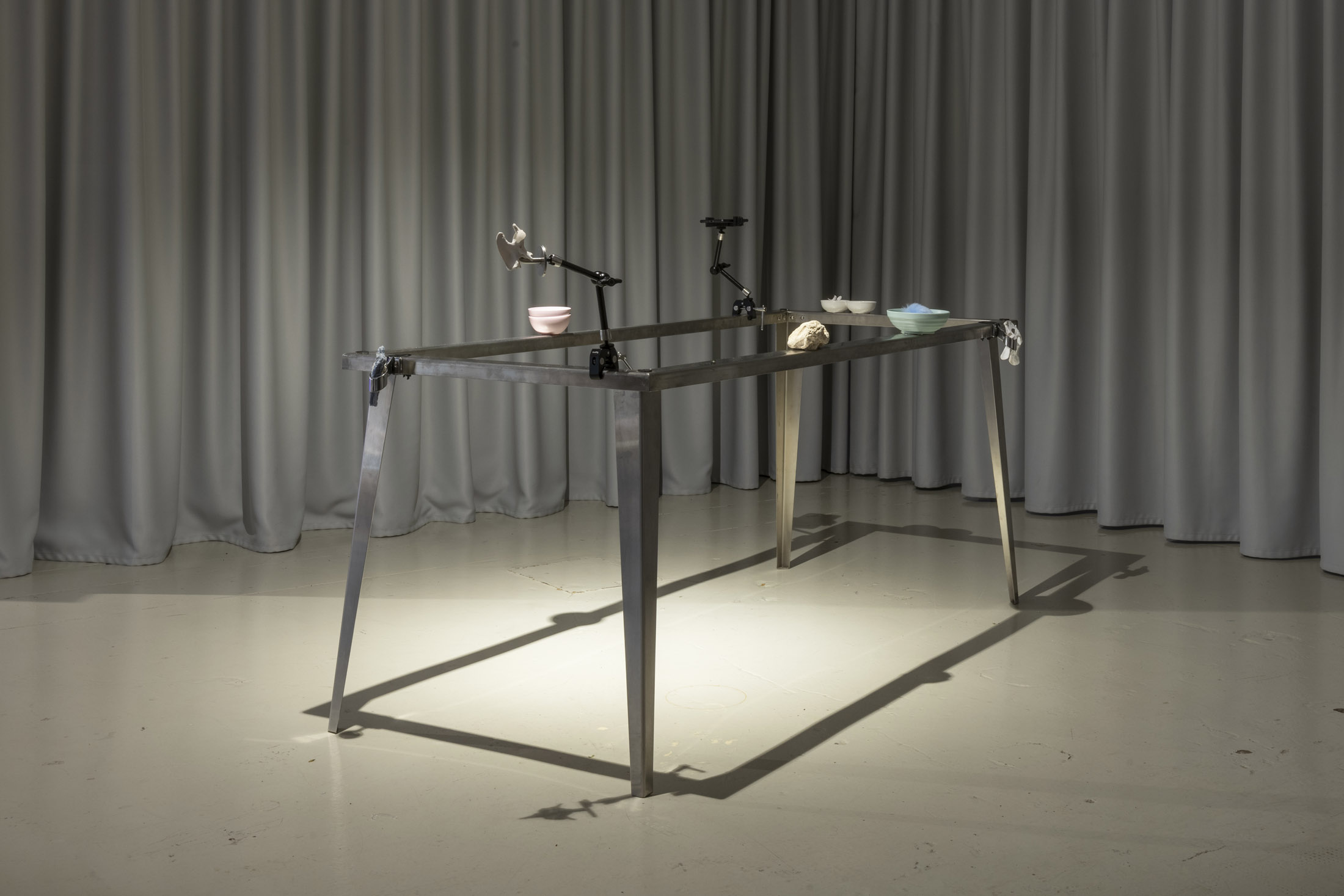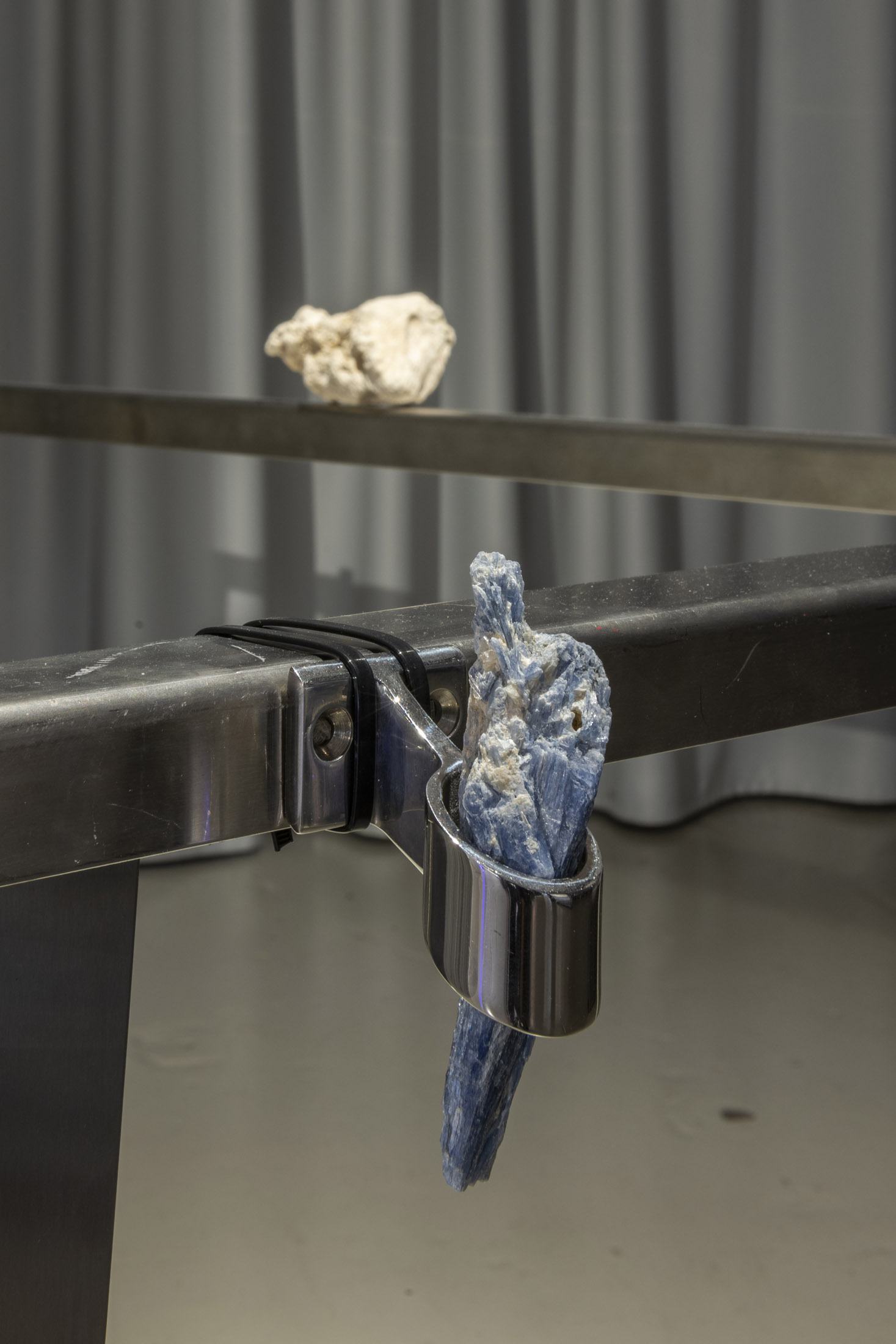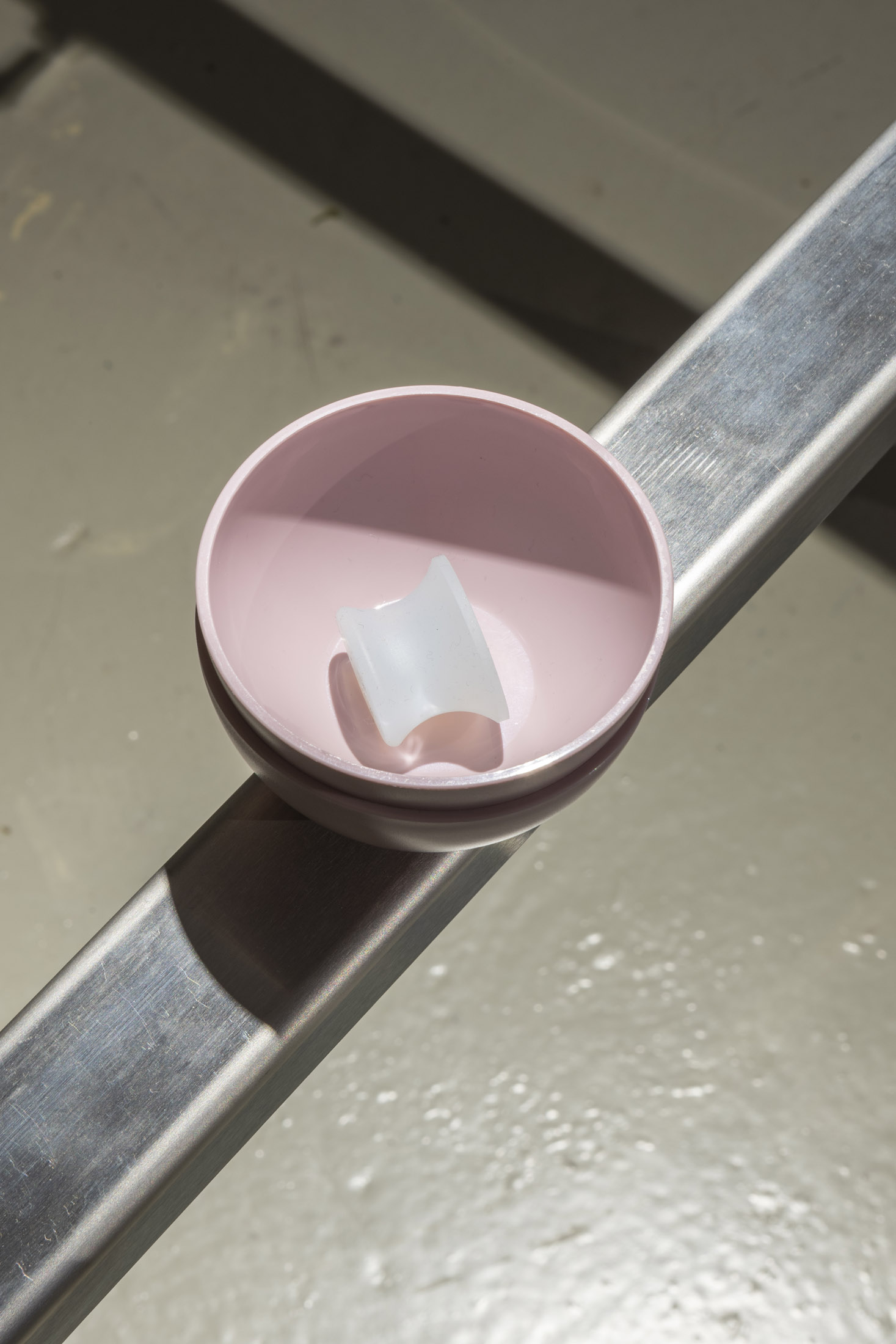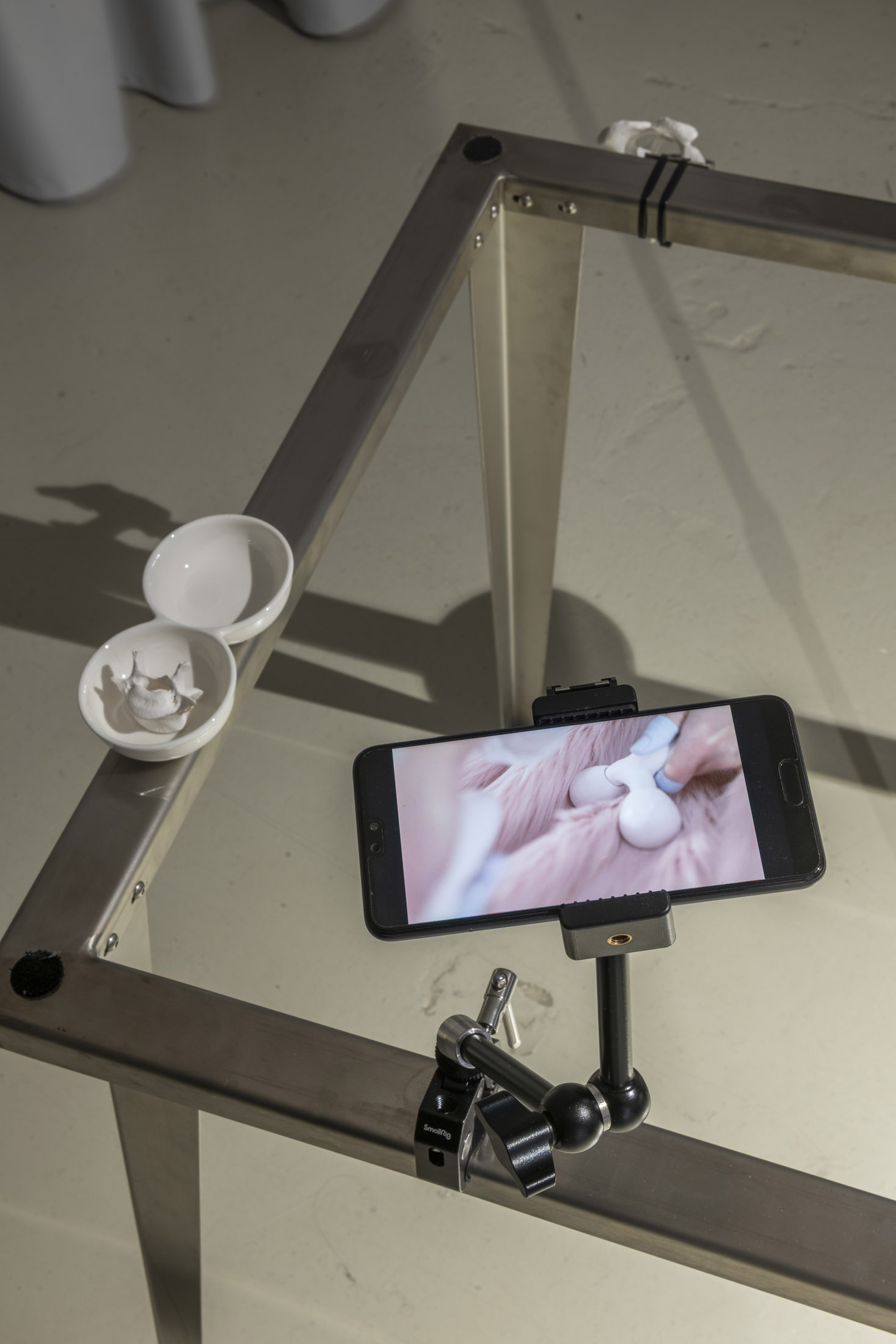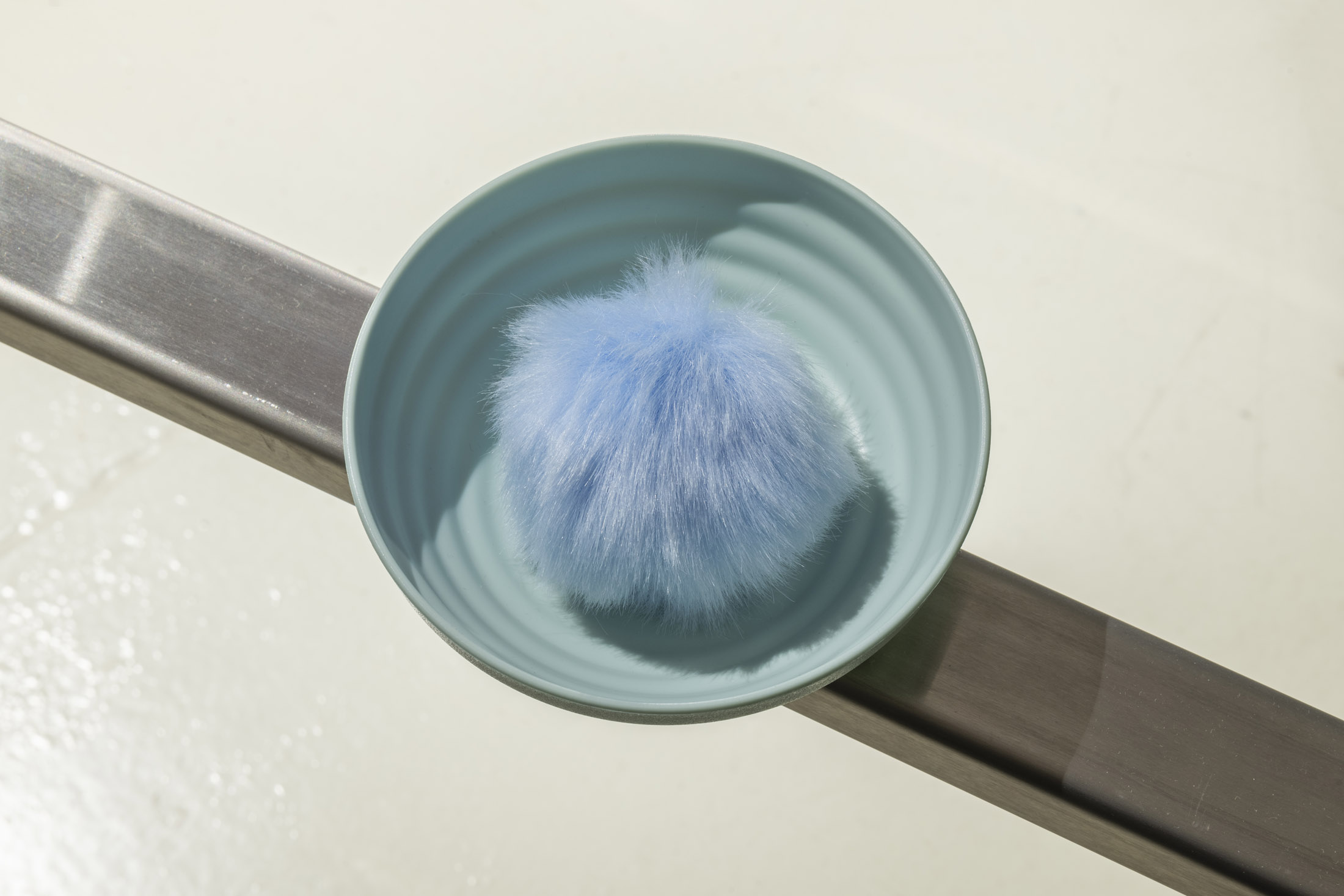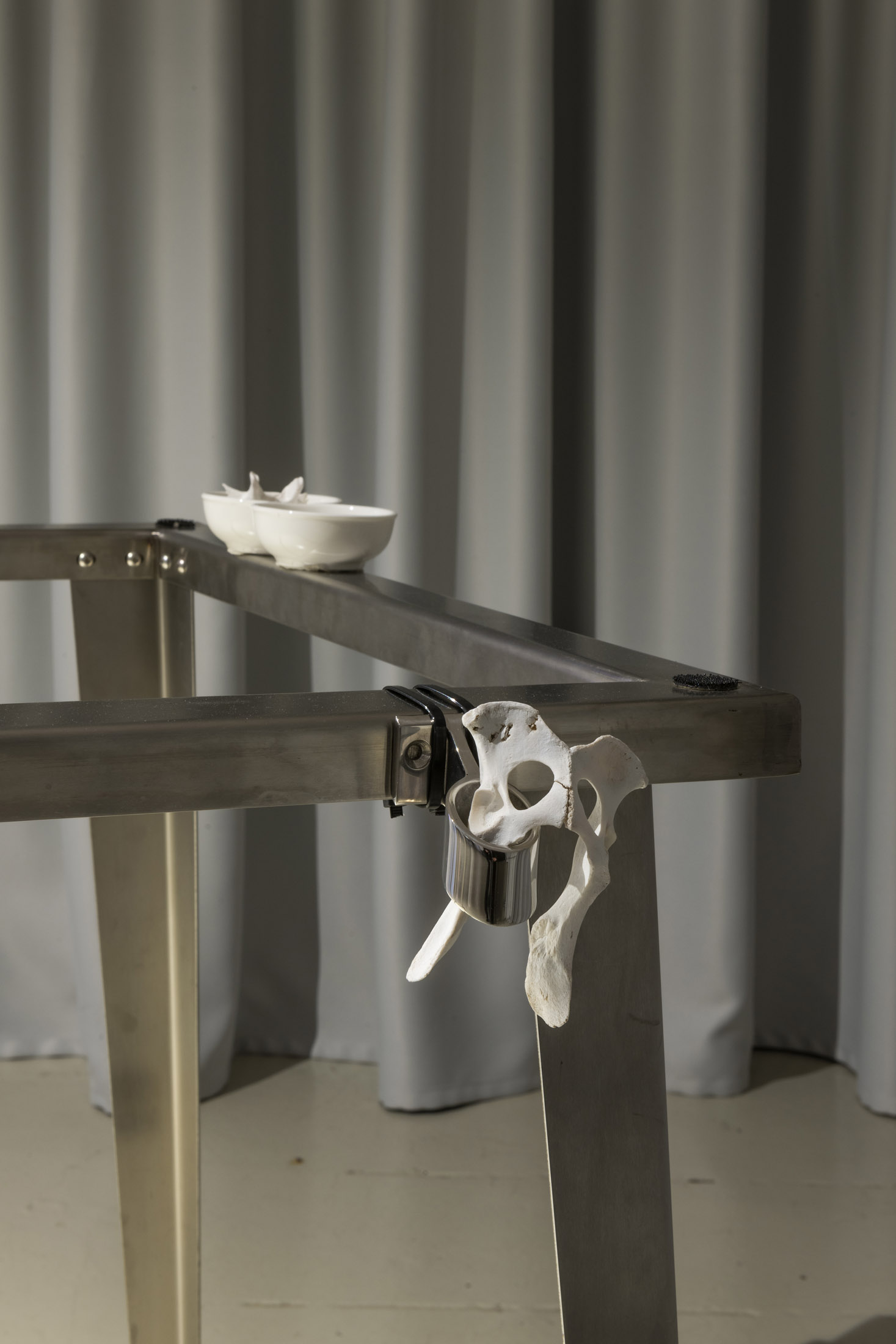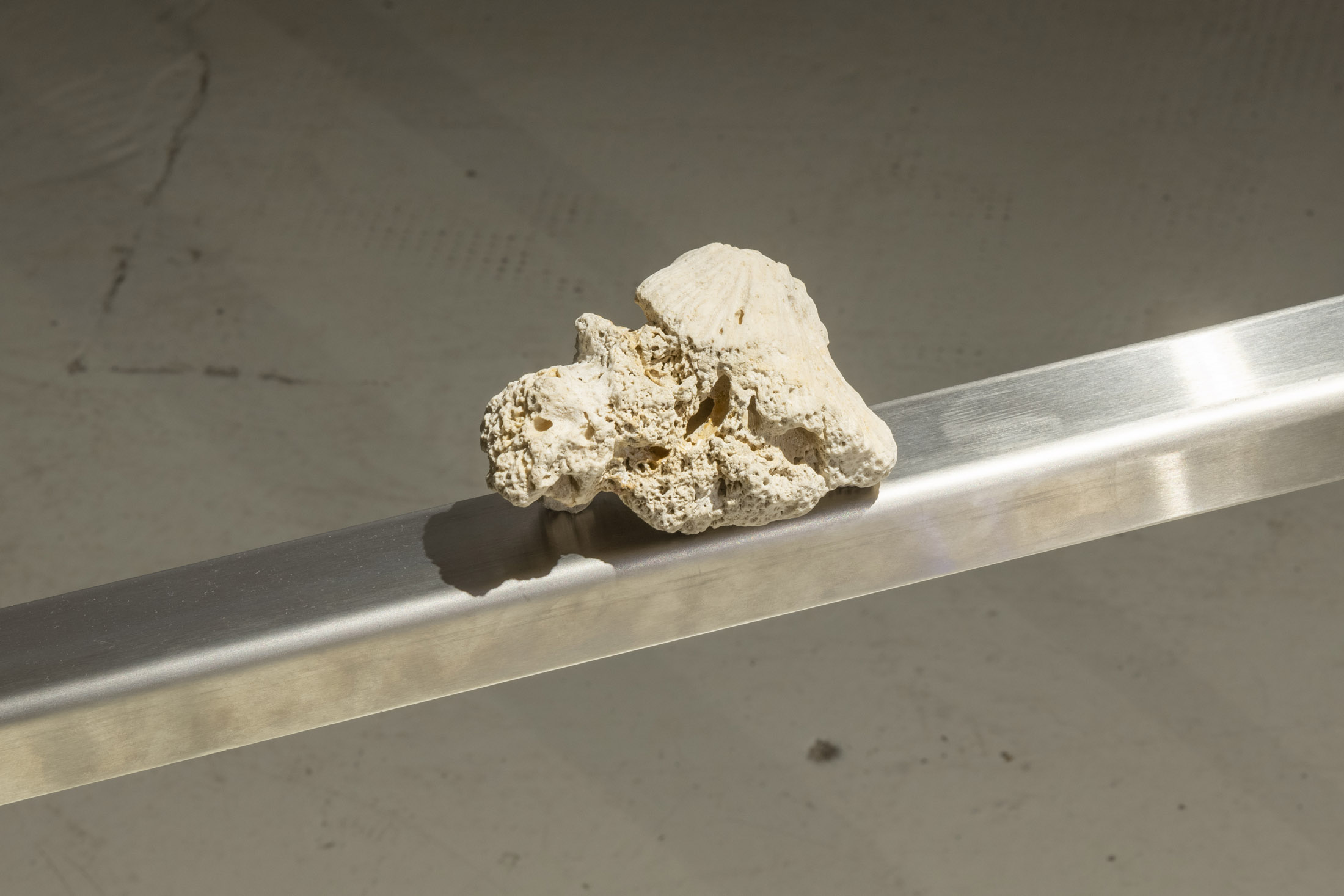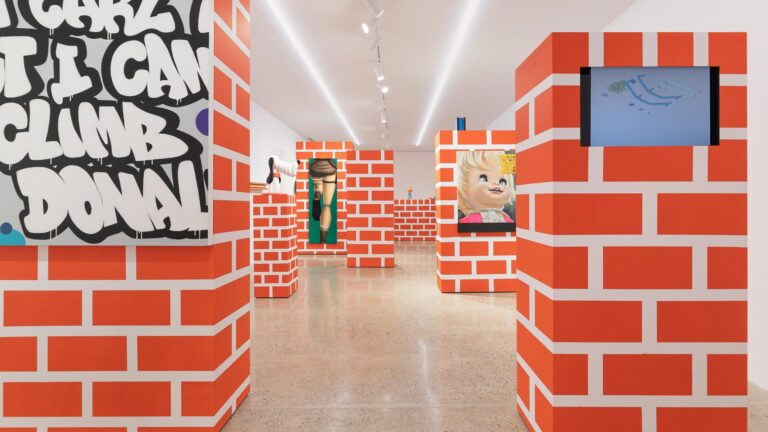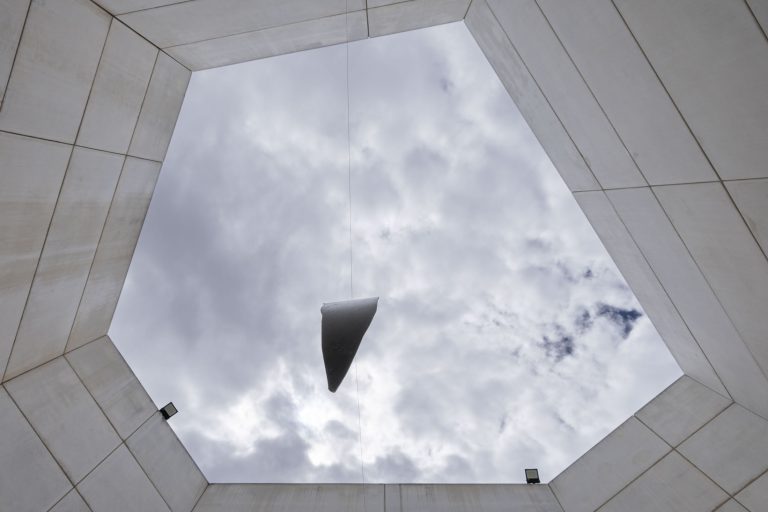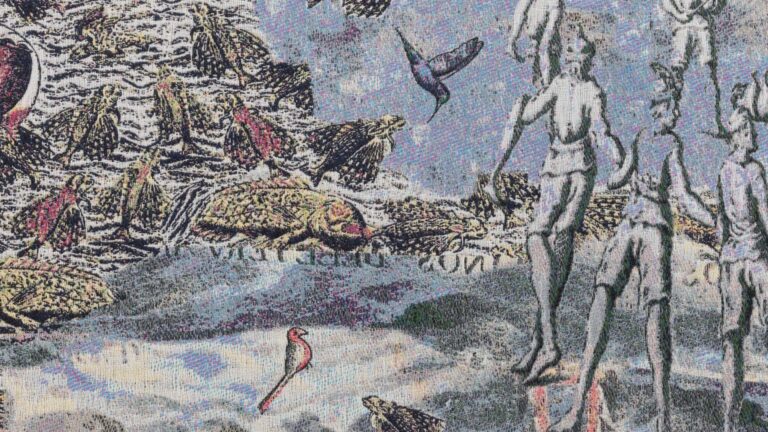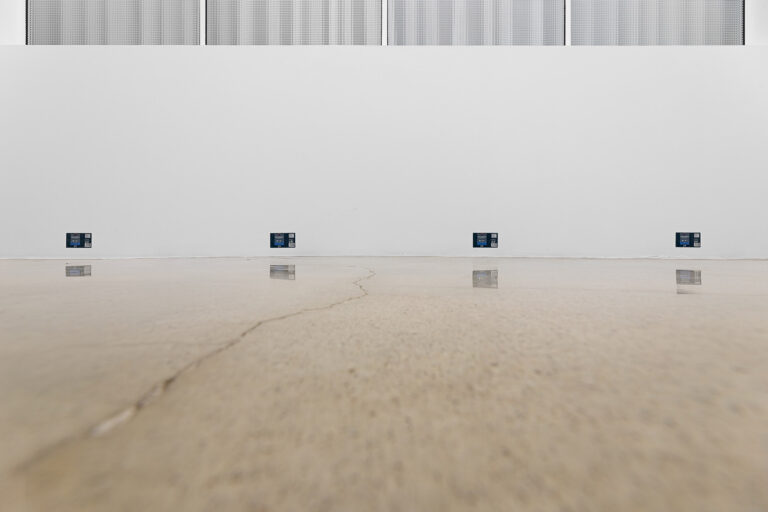Artists: Ovidi Benet, Joel Blanco, Mit Borrás and Pablo Durango
Exhibition title: The day after tomorrow
Venue: House of Chappaz, Barcelona, Spain
Date: April 14 – June 2, 2023
Photography: ©Roberto Ruiz / all images copyright and courtesy of the artist and House of Chappaz, Valencia/Barcelona
“The Day After Tomorrow is an exhibition that brings together four contemporary artists whose works speculate on the future and its possible consequences. Through installations, sculptures and video art, they explore themes such as nature, technology, identity and ethics in a changing and increasingly uncertain world.
This exhibition, which transports the visitor to a dystopian future, takes the form of a prop of artefacts that, like its name, is reminiscent of a science fiction film. The artists, all from the same generation, have in common this vision of the future and where we can go as a society. The gallery space as a museum of the evolution of species, a zoology museum and at the same time a laboratory of experimental science in which ethics and technology are questioned at the same time.
Ovidi Benet’s piece, “Bestioletes”, invites us to look at the world through the eyes of insects, small and apparently insignificant creatures that take on a new dimension in his work. With a meticulous technique, the artist creates a series of creatures that transport us to a microscopic universe full of colour and texture. Through this work, the artist invites us to contemplate the beauty and complexity of nature, and to reflect on our relationship with the natural world.
Mit Borrás’s audiovisual installation, “Shaman”, is an enigmatic work that takes us to a dystopian future in which technology and nature merge in a minimalist altar. With references to anthropology and engineering, Borrás creates a mystical object that makes us question our dependence on technology and the impact it has on the environment. At the same time, “Shaman” is a tribute to human creativity and the transformative potential of technology that invites the viewer to reflect on the relationship of human beings with technology and progress, as well as the ethical and social implications of these advances.
Pablo Durango’s work, “Cyberia”, is an installation that immerses us in a post-apocalyptic world in which official history has been rewritten. Through a series of objects and sculptural pieces, Durango speaks of the failure of the dominant historical narrative and proposes a new way of understanding identity and gender in a world that is constantly reinventing itself. With references to science fiction and archaeology, “Cyberia” is a complex and provocative work that challenges our preconceived ideas.
Finally, guest artist Joel Blanco presents “Sweet Harmony”, a work that explores the limits of creation and human evolution. The installation is made up of three sculptural pieces that represent the creations of a genetic engineer who pushes the limits of the development of the mutation of his own DNA to create new creatures. Descendants of their own creator, these beings, who do not feel, take on impossible forms. “Sweet Harmony” is a critique of the risks of genetic research, and proposes a future in which we can coexist with beings without consciousness who are our closest companions in life. The work is a reflection on the relationship between human beings and evolution, as well as on the ethical and moral limits of genetic engineering and its impact on society”.
The exhibition “The day after tomorrow” by Ovidi Benet, Joel Blanco, Mit Borrás and Pablo Durango can be seen at the House of Chappaz Gallery (Basement) in Barcelona until 2 June.
Ovidi Benet, 1990 (Denia). A designer by training and profession, he is obsessed with the “interior of the object”, taking it as the central theme of his own statement: the object forms the space, the space is the object. In his work, he seeks that generational change that manages to revive a spirit of rupture, of breaking with the established, with the academic.
The experimental work within this project is described as a search for truth and authenticity using a variety of materials and forms.
Mit Borrás, 1982 (Madrid). Mit Borrás is a transdisciplinary artist. His work deals with the idea of Adaptation, a thesis on the relationship of human beings with nature and technological progress. Rich and personal, his work describes the impact between nature and the human desires to achieve full prosperity and transcendence from his mystified relationship with progress and our digital age. Through his study of ergonomics, he envelops the viewer in a universe of his own, an aseptic, soft environment and an orthopaedic vision of the future at the boundaries of the frontiers of bioethics, techno-religion, object engineering and sexuality in the design of consumer goods production.
Pablo Durango, 1988 (Madrid). Pablo Durango investigates the relationship between power and language from a playful perspective. In his work we can find themes related to queer biologies, cyborg philosophy or dystopian futures/dimensions. He focuses his interest on the way in which reality is structured in a series of concrete categories and the consequent affection produced in the bodies themselves. The performativity of the body and its political construction are ever-present themes in his work, both in objects and performances.
Joel Blanco, born in La Coruña, currently lives and works in Madrid. Artist, designer, researcher and consultant, specialising in Future Scenarios, Speculative Design and Design Fiction. Included in the Forbes list of the best Spanish futurists in 2022. Alumni of the Design Academy in Eindhoven, the UOC and the IED in Madrid among others, he is also a professor at TAI, University School of Arts in Madrid and has also taught at the IED and ESD in Madrid. He has participated in several national and international exhibitions and stands out for his versatility and love for objects and contextual experimentation although his expressions range from video to installations.

